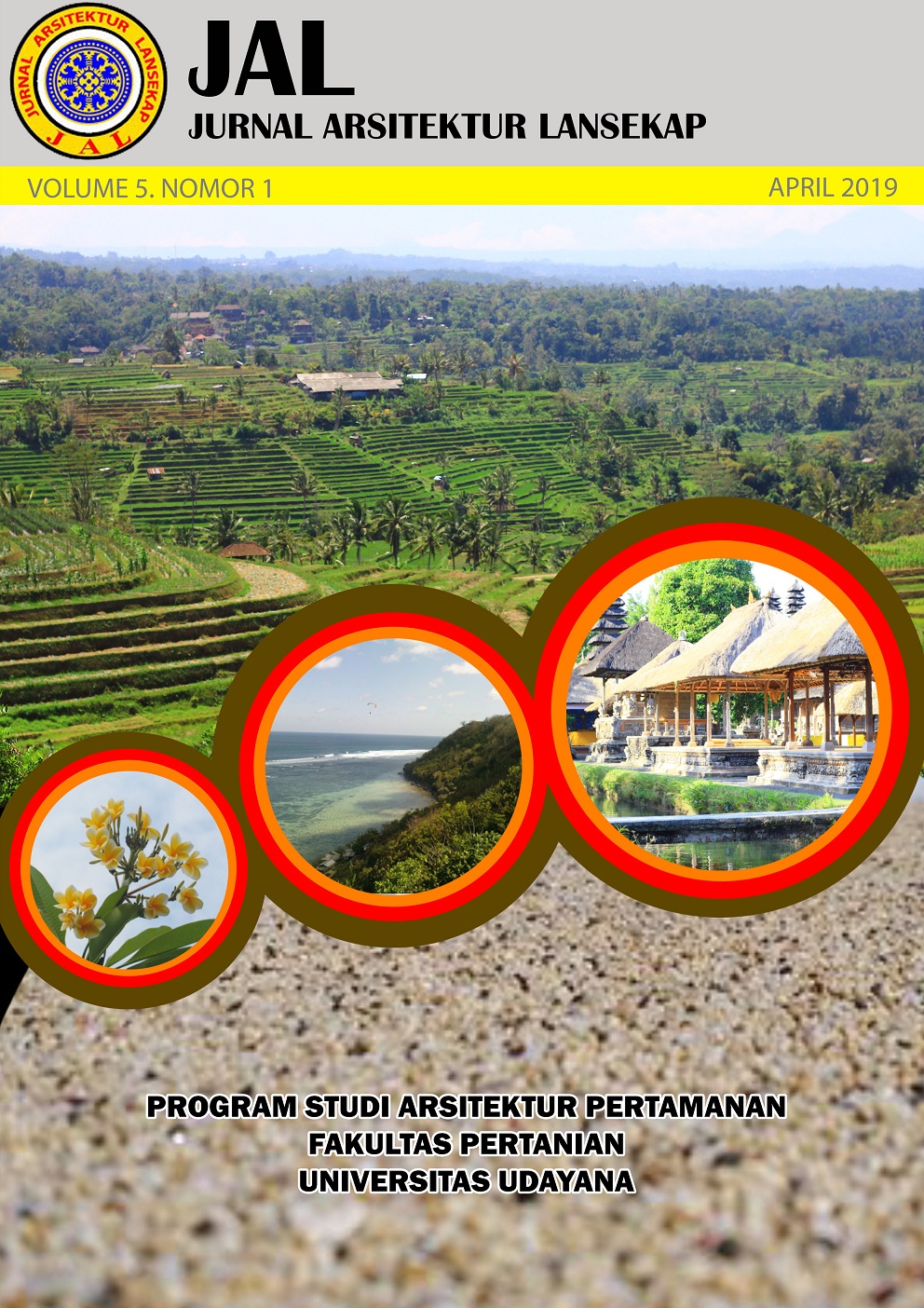Studi komparasi traffic island Ciung Wanara di Gianyar dengan traffic island Satrya Gatotkaca di Tuban
Abstract
Comparative study of Ciung Wanara traffic island in Gianyar with Satrya Gatotkaca traffic island In Tuban. Traffic island is an island in the middle of the road that serves to direct the flow of traffic and a waiting place for the user to cross the road. Traffic island of Ciung Wanara in Gianyar and Traffic island of Satrya Gatotkaca in Tuban had turned their function of being a place of recreation for the community. The purpose of this study is to invent existing condition of Ciung Wanara and Satrya Gatotkaca traffic island. This study also provides recommendations in the form of designs that can improve the function of the site. The method used in this research was field survey by conducting observation, distributing questioner and doing interview. Research showed that, users in Ciung Wanara traffic island were dominated by student while users who came to the traffic island Satrya Gatotkaca were dominated by employees. The selection of vegetation bettwen the traffic island of Ciung Wanara and traffic island of Satrya Gatotkaca very different. Vegetation in the traffic island of Ciung Wanara used more of large size vegetation that can block the view of the user of the vehicle, while the vegetation used in the traffic island of Satrya Gatotkaca use lower plants size. The recommendation given in both locations was to add access to traffic island of Ciung Wanara so as to make easier for users to find the right place to cross, while traffic island of Satrya Gatotkaca was arraged it crossing space for more convenient and secure for users to passed the crosswalk.
Downloads
References
Sudjana, D. 2001. Metode Statistika. Tarsito. Bandung.
Wulandari. 2016. Cara Pemkot Merawat Taman Kota. Available online at: www.pikiran-rakyat.com. (diakses pada 1 Agustus 2017)

This work is licensed under a Creative Commons Attribution 4.0 International License.
An author who publishes in the Jurnal Arsitektur Lansekap (JAL) agrees to the following terms:
- Author retains the copyright and grants the journal the right of first publication of the work simultaneously licensed under the Creative Commons Attribution-ShareAlike 4.0 License that allows others to share the work with an acknowledgement of the work's authorship and initial publication in this journal
- Author is able to enter into separate, additional contractual arrangements for the non-exclusive distribution of the journal's published version of the work (e.g., post it to an institutional repository or publish it in a book) with the acknowledgement of its initial publication in this journal.
- Author is permitted and encouraged to post his/her work online (e.g., in institutional repositories or on their website) prior to and during the submission process, as it can lead to productive exchanges, as well as earlier and greater citation of the published work (See The Effect of Open Access).
Read more about the Creative Commons Attribution-ShareAlike 4.0 Licence here: https://creativecommons.org/licenses/by-sa/4.0/.







